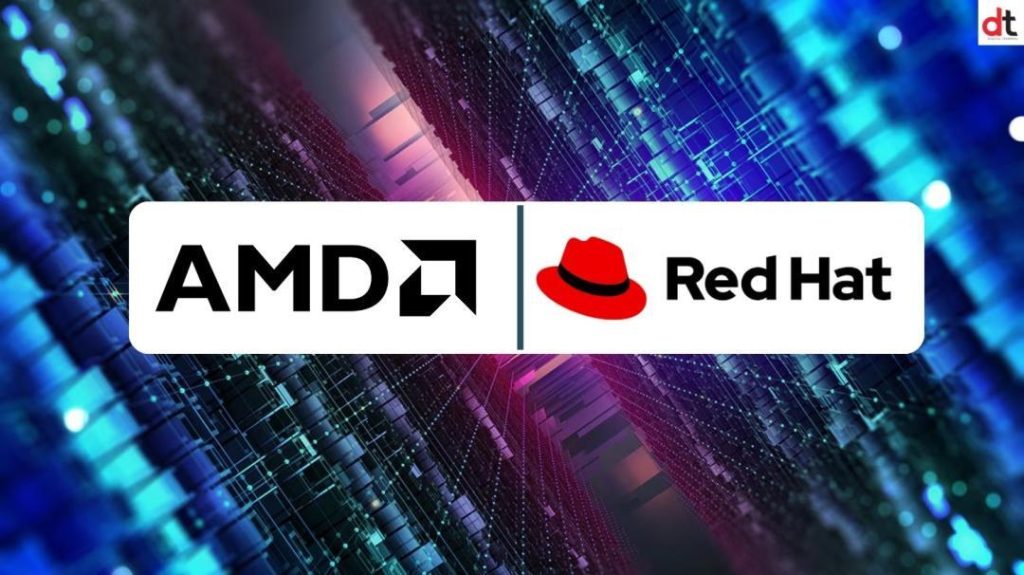
Red Hat, AMD Partner to Boost AI & Virtualization in Cloud
In a bid to accelerate the adoption of Artificial Intelligence (AI) and virtualization in the hybrid cloud, Red Hat and AMD have announced a strategic partnership. This partnership aims to expand customer choices across the hybrid cloud, enabling them to deploy optimized, efficient AI models and modernize traditional virtual machines (VMs) in a cost-effective manner.
As the demand for AI and virtualization continues to grow, Red Hat and AMD are working together to provide a synergistic solution that combines the power of Red Hat’s OpenShift and AMD’s EPYC processor-based solutions. The partnership will enable customers to leverage the strengths of both companies to accelerate their digital transformation journey.
The Need for AI and Virtualization in the Hybrid Cloud
The hybrid cloud has become the new normal for businesses, with many organizations adopting a multi-cloud strategy to achieve greater flexibility, scalability, and cost-effectiveness. However, the increasing demand for AI and machine learning workloads has created new challenges for IT teams. AI and ML workloads require significant computing resources, high-performance storage, and specialized hardware, making them more difficult to deploy and manage in the cloud.
Virtualization, on the other hand, has become a crucial component of modern IT infrastructure. It enables organizations to run multiple virtual machines (VMs) on a single physical server, improving resource utilization, scalability, and flexibility. However, traditional virtualization solutions may not be optimized for AI and ML workloads, leading to performance issues and bottlenecks.
The Red Hat and AMD Partnership
The partnership between Red Hat and AMD aims to address these challenges by providing a comprehensive solution that combines the power of OpenShift and AMD’s EPYC processor-based solutions. OpenShift is a cloud-native container platform that enables organizations to build, deploy, and manage containerized applications in a consistent and scalable manner.
AMD’s EPYC processor-based solutions, on the other hand, offer exceptional performance, security, and scalability for AI and ML workloads. With this partnership, Red Hat and AMD will provide customers with a synergistic solution that can handle demanding AI and ML workloads, while also providing a scalable and flexible infrastructure for traditional VMs.
Key Benefits of the Partnership
The Red Hat and AMD partnership offers several key benefits to customers, including:
- Optimized AI Workloads: The partnership enables customers to deploy optimized AI workloads on AMD’s EPYC processor-based solutions, which offer exceptional performance and scalability for AI and ML workloads.
- Cost-Effective Virtualization: The partnership enables customers to modernize traditional VMs in a cost-effective manner, reducing the need for expensive hardware upgrades and minimizing downtime.
- Hybrid Cloud Flexibility: The partnership provides customers with a flexible and scalable infrastructure that can support both on-premises and cloud-based deployments, enabling them to achieve greater flexibility and scalability in their hybrid cloud environments.
- Enhanced Security: The partnership enables customers to benefit from enhanced security features, including AMD’s Secure Processor and Red Hat’s security features, which provide an additional layer of protection for their workloads and data.
Conclusion
The partnership between Red Hat and AMD is a significant development in the hybrid cloud landscape, enabling customers to accelerate their digital transformation journey through the deployment of optimized AI workloads and cost-effective virtualization. With this partnership, Red Hat and AMD are providing customers with a comprehensive solution that combines the power of OpenShift and AMD’s EPYC processor-based solutions, enabling them to achieve greater flexibility, scalability, and cost-effectiveness in their hybrid cloud environments.
Source:






